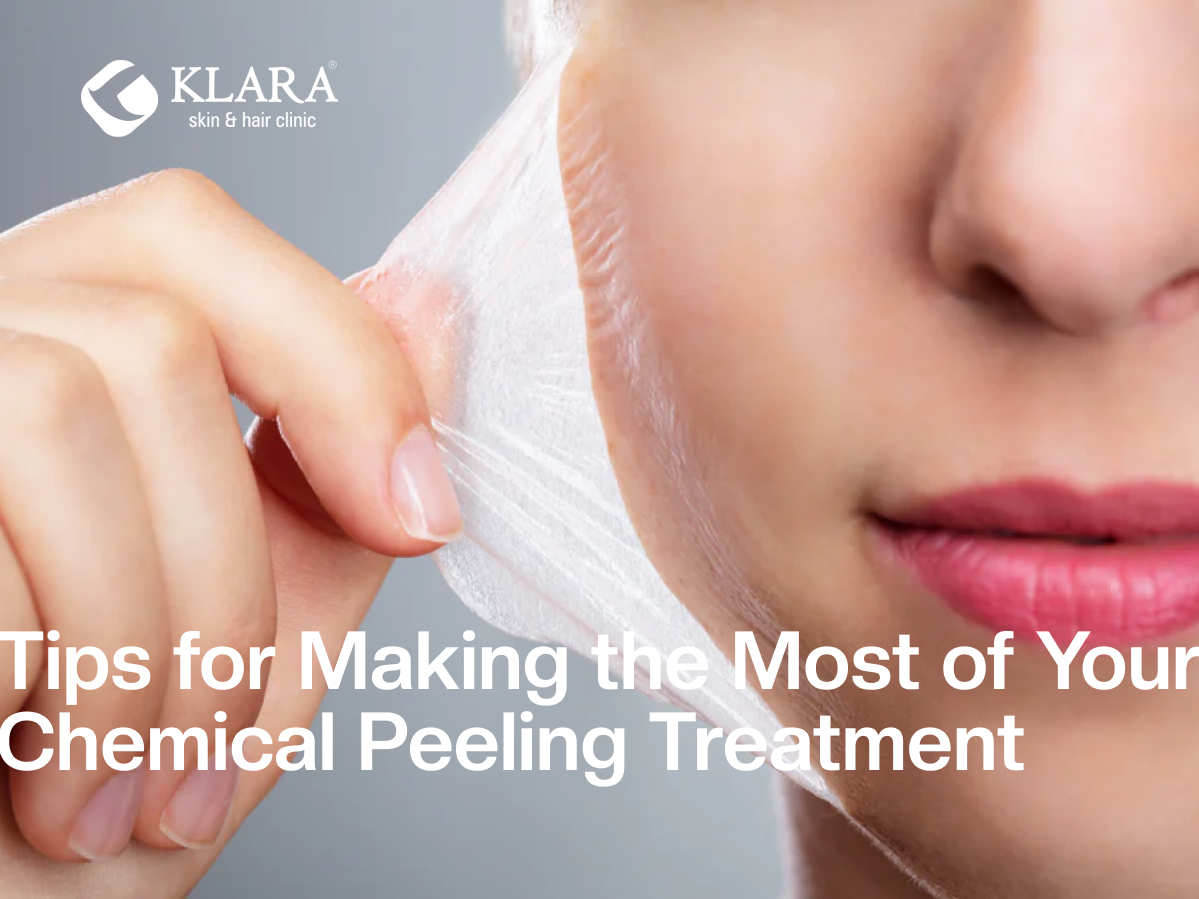Just as significant as the chemical peel itself is the aftercare. The goal of chemical peels is to maintain youthful, luminous skin. Chemical peels provide several advantages for your skin, but for the best results, you must take good care of your skin both before and after the peel. Even though you’ll feel rejuvenated and calm after your treatment, the skin’s metamorphosis won’t be complete until you leave the skin care specialist’s clinic. Your skin can mend and regenerate new cells with the aid of post-chemical peel treatment.
At Klara Skin and Hair Clinic, Chennai, we provide several options for you, including chemical peels, if you’re trying to improve your skincare regimen. Chemical peels are a quick and efficient approach to reducing fine lines and wrinkles, getting rid of acne, improving skin texture, and reducing hyperpigmentation.
What is Chemical Peel?
Before discussing chemical peel aftercare, we must first discuss the chemical peel itself. Knowing what’s occurring in your skin is crucial for understanding how to care for it. There won’t be an instantaneous “Chemical Peel Before and After” wow moment. Before your skin reaches the young, revitalized, healthy skin phase, it must first go through the real peeling process.
Chemical peels are a skin-improvement procedure that is frequently employed on the face but may also be utilized on the neck and hands. The goal is to remove the older, dead skin cells off the skin’s surface so that the younger, more vibrant cells can emerge from beneath. Compared to the old skin, the skin that has been regenerated usually seems smoother, younger, and more luminous.
The excellent dermatologists use a chemical solution to exfoliate the skin to give it this modern appearance. The layers of the skin are traumatized or injured by that chemical solution, which forces them to peel away to expose younger-looking skin below. Chemical peels come in three different categories:
- A superficial or light peel
• Medium peel
• Deep peel
But to go a step further, here are a few pointers to ensure you always get the most out of your chemical peel. Let’s examine more closely:
- Wear sunscreen every day when you have a chemical peel: Sun exposure can worsen the results of your chemical peel treatment and can reverse the benefits of the treatment.
- Avoid picking or touching treated areas: Resist the urge to pick or touch your face after a chemical peel, as this can cause further irritation and spread the peel to other areas of your skin.
- Avoid using any harsh products on your skin: Avoid using any abrasive or harsh products on your skin while you’re recovering from a chemical peel, as this can irritate your skin and cause further damage.
- Avoid using makeup: Avoid using makeup until your skin has fully recovered from the peel, as this can interfere with the healing process.
- Moisturize regularly: Keep your skin well-hydrated after a chemical peel by using a moisturizer with SPF.
- Follow the instructions of your dermatologist: Be sure to follow all instructions given by your dermatologist, as they are the best source of information on how to properly care for your skin after a chemical peel.
Make sure you are receiving chemical peels frequently if you want to see effects from them. We will assess how frequently you should have peels done based on the type of peel you receive, your skin issues, and your lifestyle.
Despite chemical peels, you may include a whole line of healthy skincare products into your everyday routine. You should be concerned about the appearance and health of your skin if you’re treating yourself to a chemical peel operation. Meticulous aftercare is a fantastic beginning step, but don’t stop there. Are you prepared to book a chemical peel with Klara Skin and Hair Clinic? Make an appointment right away!
PRP is the human body’s own wonder drug!! Everyone has it in them. When you scraped your knee during childhood, a yellow, sticky looking substance quickly covers the skinned area. That substance later becomes a scab.
In a few weeks or months depending on the severity of the abrasion, when you looked down at your knee, all the skin and hair had regrown exactly like how it was before the accident. The yellow sticky substance that started the healing process and saw it through to completion was PRP.
Platelet-Rich Plasma (PRP) for hair restoration involves a simple injection of your own platelets into the vascular layer of your scalp.
- Increases blood supply to the follicle
- Increases shaft size (thickness)
- Triggers and maintains the growth phase
- Controls hair growth cycle
- Decreases hair loss
Regain & retain your youthful look. Call – +91 8056090670

